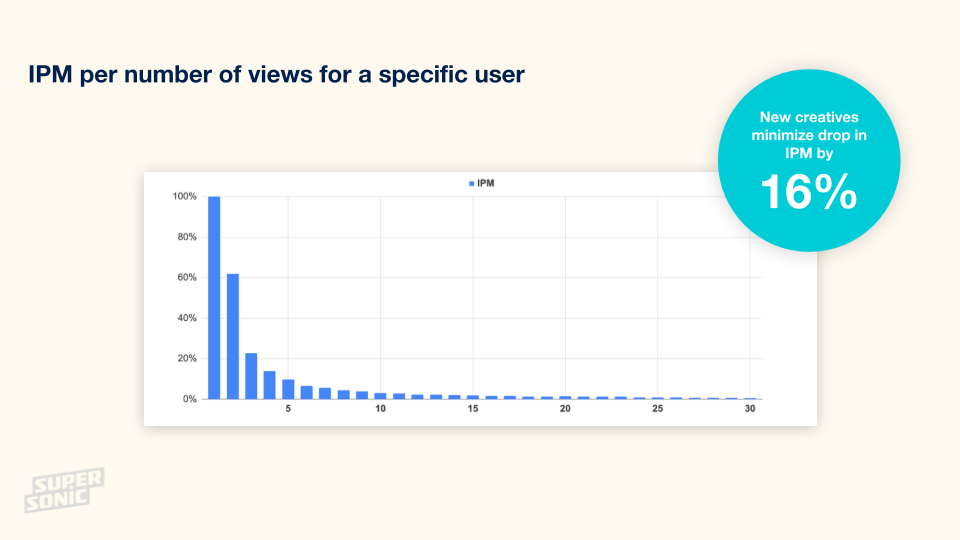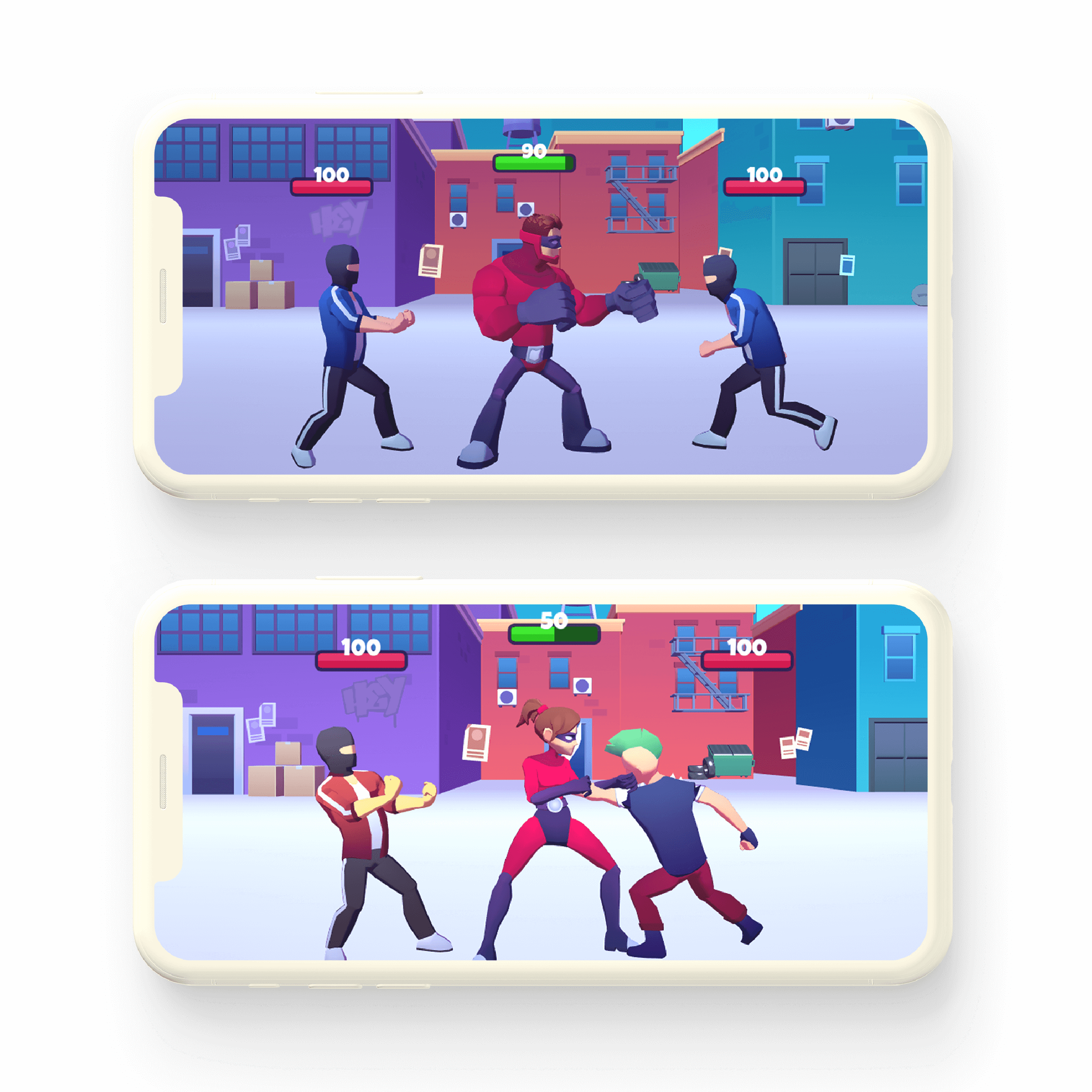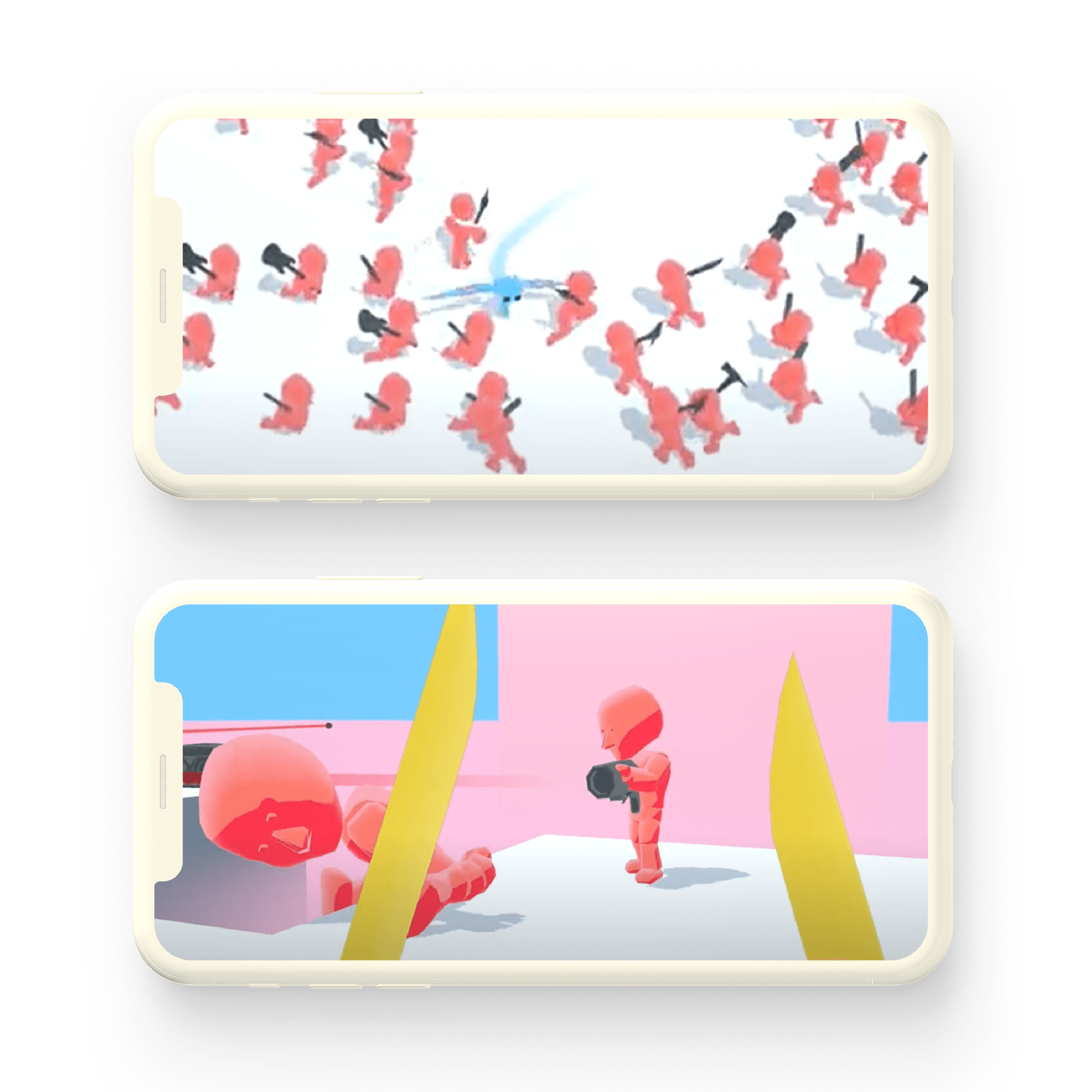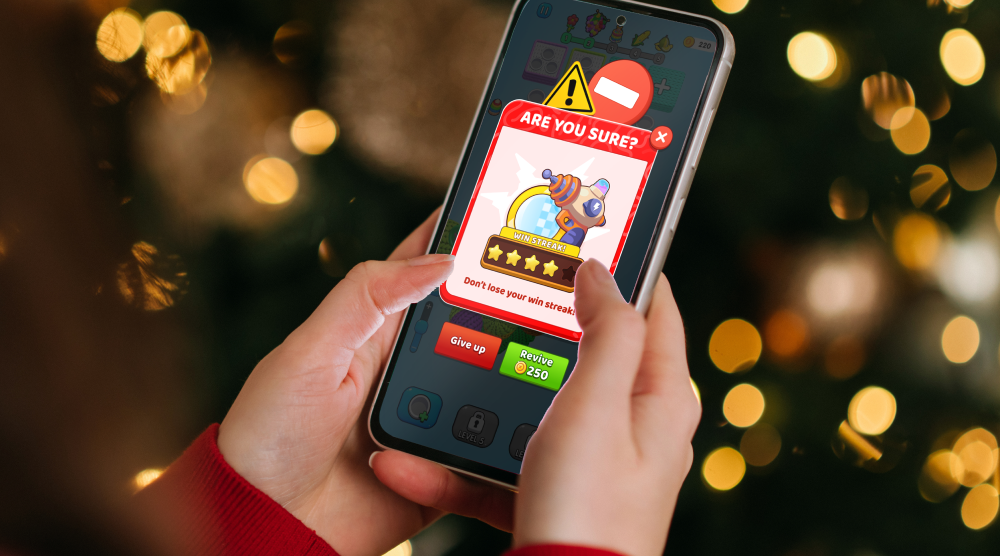Once you have a set of creatives that are working for your game, refreshing them is just as important to help you scale, stay ahead of competitors, and avoid ad fatigue. In fact, new creatives can reduce the drop in IPM or increase in CPI by 16%. This is especially true on social media platforms, where adding more iterations and new creatives is favored by their algorithms, exposing you to more users. We put together our 5 tips for refreshing hyper-casual creatives to help you reach more users and scale your game.

Highlight different characters
When refreshing your creatives, something to focus on are the characters in your game. According to Karen Levy Atias, Director of Creative Operations at Supersonic, different characters will resonate with different audiences, so refreshing your creatives by highlighting various characters is a good way to see what drives the most installs.
Start with the characters you do have, but you can even create a character that’s not in your game to test how it performs - if it does better than other creatives, design that character and add them to the game. For example, if all of your game’s characters are male, test out a creative featuring a female character. If that creative drives significant traffic, it’s a signal to incorporate her into your game.
Publishers with in-house creative studios like Supersonic have the insight, resources, and experience to help you determine which characters to highlight in your creatives - and can help you design a completely new character.
For the game Invincible Hero, for example, Supersonic tested the scenario we just talked about - switching up the creative to feature a female character instead of male. We saw that on social media, Invincible Hero’s biggest audience was women 20-30 years old, so we took the most successful playables they had running and changed the character to a female one. Doing so helped the game reach an all-time high IPM.

2. Show different themes
The themes of your game can be a big draw for users, and good creatives highlight these themes in ways that catch their attention on social and in other apps. To decide what themes to use when refreshing your creatives, take a look at which levels in your game are engaging users and performing the best. It’s important to share these insights with your publisher, too, as these learnings can help them optimize campaigns.
One way to try out new themes is to showcase different environments in your playables. For example, in Samurai Flash, the creative variations included showing the character running through a winter snowscape, a forest, and a lava background. Working with Supersonic to add depth to the game and optimize creatives, Yummy Games made these changes and more to help them succeed in boosting retention 55%.
3. Change the angles
The camera angles and perspective of your creatives can also attract different users. When refreshing your creatives, determine which angles drive the most installs by testing multiple versions that show your game from different perspectives.
For example, the runner perspective is a popular camera angle used in hyper-casual games and according to Tomer Geller, Game Design Lead at Supersonic Studios, this perspective works so well because “the character and camera are in constant motion, making it interesting enough for the player (rather than a default static screen) even though he isn’t in direct control of ‘the motion’. It promotes a sense of urgency to continue with the game, keeping the player engaged. What’s interesting here is that despite the camera moving forward, the perspective remains the same.”
Testing a runner perspective, character point-of-view, right-side camera angle, or a shot from overhead are all options for switching up perspective and determining which performs best.
Samurai Flash is a great example here, too, because Supersonic tested many video creative iterations at different camera angles so we could pinpoint the highest performers - from a birds-eye view to close-ups to a runner perspective. We then kept the top performers and used those to create a winning UA strategy.

4. Try a new format
The format of your hyper-casual creatives affects how users interact with them, which can lead to more installs - or fewer. Diversifying the format of your creatives and running campaigns with many variations at once is a best practice when refreshing your creatives.
Aviv Lahav, Creative operation manager at Supersonic, suggests refreshing with the following amounts:
- 2 batches of videos for a total of 50 - 30 videos that show simple gameplay to test which levels and features from the game will be most interesting for the users, and a second batch of 20 videos that show iterations with headlines, emojis, music, and sound effects
- 1-2 interactive end cards
- 2 different playables, with each playable including 6 different versions to test user engagement from a few different aspects
Let’s explore a few format options you should try out when you hit the refresh button on creatives:
Playables
When optimized, playable ads attract high-quality users, engage them with a mini-game, and compel them to install and keep playing. Freeplay worked with Supersonic to test each type of creative format for their hyper-casual game, Join Clash, and found that the playable ad generated the highest scale and quality. In fact, the playable helped Join Clash reach #2 on Android and iOS in the US, generating an IPM of 38 and 2x longer LTV.
Videos
Videos are especially popular for UA campaigns on social platforms as opposed to playables or interactive end cards, which appear within games on SDK networks. Video creatives generally highlight either:
- Gameplay
- Gameplay with added elements that aren’t necessarily in the game itself (e.g. showing a finger swiping on the screen or dialogue between characters that creates a storyline)
Interactive end cards
Interactive end cards - or IECs - are a way to engage users at the end of a video ad by giving them an interactive experience with the game then showing them a call to action that encourages installs. Bead Sort used interactive end cards and video creatives to achieve the #1 spot on iOS and Android in the US, an IPM of over 45, and a 20% boost to LTV.
5. Refresh at the right frequency
Knowing the sweet spot of how many creatives to refresh in a certain amount of time is key - you don’t want to update too few but refreshing too many may become an operational and time burden. As an example, for Wheel Scale, Supersonic tested 80 iterations of video creatives featuring 15 different concepts, each with various camera angles, text, music, etc. We refreshed them each week, helping Wheel Scale achieve 700 million impressions and an IPM of more than 30.
Generally, we recommend refreshing hyper-casual creative on social and SDK networks every week for a recently-published game that’s doing well in the charts. If your game continues to perform well as the weeks go by, you can start refreshing creatives every 2-3 weeks. Your playables, though, only need refreshing once every quarter. Going back to Wheel Scale as the example, Supersonic refreshed their playables every 1.5 months, which helped the best-performing playable achieve 800 million impressions, 85% engagement rate, and great scale.
On SDK networks specifically, we suggest testing 2 new playables per quarterly refresh, along with trying out video variants that are performing well from campaigns on social. Video is the most popular format on social, so the top performing video creative on this platform is likely to perform well on SDK networks, too. It’s important to monitor video creative success on social before using it for your SDK campaigns. Often, the results between SDK and social will align to prove what creatives are working best.

Continue to scale your campaigns
Like we mentioned, refreshing your hyper-casual creatives can minimize the drop in IPM over time. It can also drive scale as you optimize campaigns and attract more users to your game. With the tips laid out here, refreshing creatives in the right way - and at the right time - doesn’t have to just be a guessing game. The right approach and insight from those experienced in hyper-casual publishing and creative design can help you grow your game and make data-backed decisions.
Let's put these tips to good use
Publish your game with Supersonic


